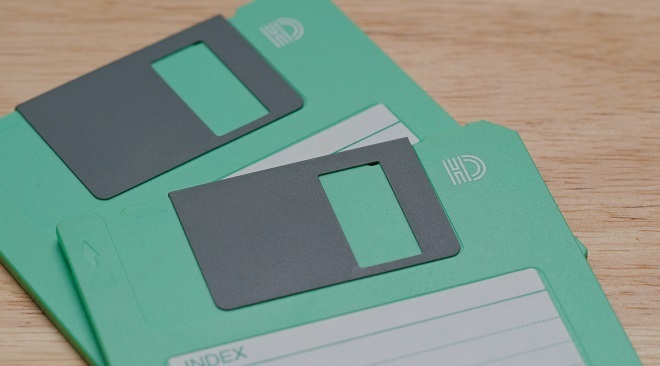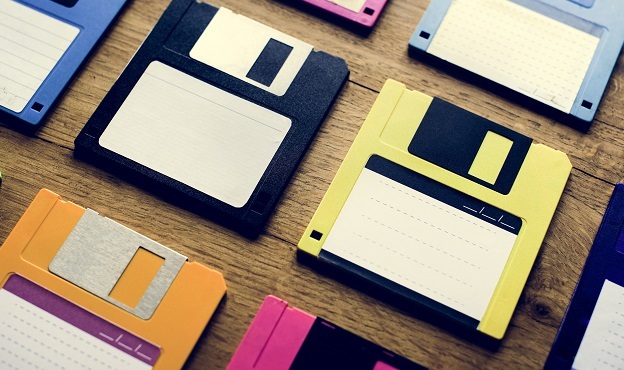
- Computer - Home
- Computer - Overview
- Computer - Advantages & Disadvantages
- Computer - Classification
- Computer - Applications
- Computer - History & Evolution
- Computer - System Characteristics
- Computing Origins
- Computer - Origins
- Computer - Generations
- Computer - Types
- Computer Components
- Computer - Components
- Computer - CPU
- Computer - CPU Components
- Computer - Arithmetic Logic Unit (ALU)
- Computer - Control Unit
- Computer - Input Devices
- Computer - Output Devices
- Computer - Memory Units
- Computer Hardware
- Computer - Hardware
- Computer - Motherboard
- Computer - GPU
- Computer - PSU
- Computer Software
- Computer - Software
- Computer - Software Types
- Computer Data Storage & Memory
- Computer - Data Storage
- Computer - Types of Data Storage
- Computer - Hard Disk Drives (HDD)
- Computer - Solid State Drives (SSD)
- Computer - Memory Cards
- Computer - Optical Storage
- Computer - NAND Flash Memory
- Computer - NVMe Memory
- Computer - CompactFlash Card
- Computer - Cloud Storage
- Computer Memory
- Computer - Memory
- Computer - Primary Memory
- Computer - Secondary Memory
- Computer - RAM
- Computer - ROM
- Computer - DRAM
- Computer - VRAM
- Computer - Cache Memory
- Computer Internet & Intranet
- Computer - Internet and Intranet
- Computer - Internet
- Computer - Extranet
- Computer - Websites
- Computer Office Tools
- Computer - Word Processors
- Computer - Spread Sheet
- Computer - Power Presentations
- Computer - E-mail Tools
- Computer Miscellaneous
- Computer - Ports
- Computer - Number System
- Computer - Number Conversion
- Computer - Data and Information
- Computer - Networking
- Computer - Operating System
- Computer - Keyboard Shortcut Keys
- Computer - Virus
- Computer - Antivirus
- Computer - How to Buy?
- Computer - Available Courses
- Calculator Vs. Computer
- Brain Vs. Computer
- Analog Vs. Digital Computer
- Supercomputer Vs. Mainframe Computer
- Mainframe Vs. Minicomputer
- Printer Vs. Scanner
- OCR Vs. MICR
- File Vs. Folder
- exFAT Vs. FAT32
- FAT32 Vs. NTFS
- FAT32 Vs. exFAT Vs. NTFS
- CPU Vs. GPU
- GUI Vs. CLI
- GUI Vs. CUI
- Cache Memory Vs. Virtual Memory
- Register Vs. Memory
- RAM Vs. CAM
- SRAM Vs. DRAM
- DDR2 Vs. DDR3
- PROM Vs. EPROM
- CD Vs. DVD
- Blu-Ray Vs. DVD
- MMU Vs. MPU
- Computer Terminologies
- Microsoft Windows
- Desktop
- Monitor
- Microphone
- Keyboard
- Keypad
- Mouse
- Printer
- Webcam
- Floppy Disk Drive
- Compact Disc
- Program
- Incognito Mode
- Electronic Mail (E-Mail)
- Server
- Cloud Hosting
- Minicomputers
- Supercomputer
- Bit
- Byte
- Kilobyte
- Megabyte
- Terabyte
- Yottabyte
- Zettabyte
- Exabyte
- Petabyte
- JEDEC
- Hub
- Block Storage
- Username
- URL
- Num Lock
- BIOS
- Bluetooth
Computer - Floppy Disk Drive (FDD)
Introduction
Floppy Disk Drive (FDD) is a hardware device that is installed inside a computer and allows the user to read, write, and format floppy disks. Floppy disks were available in different sizes, but the most common size was the 3.5-inch disk that could hold up to 1.44 megabytes of data.

To use a floppy disk, the user would insert it into the floppy disk drive, and the computer's operating system would automatically recognize it. The user could then save data to the disk or retrieve data from it. The data was stored on the disk in concentric circles known as tracks, and each track was divided into sectors that held a fixed amount of data.
History of FDD
The history of the floppy disk drive (FDD) dates back to the late 1960s when IBM first introduced the 8-inch floppy disk. This was a large and flexible magnetic disk that could store up to 80 kilobytes of data. The 8-inch floppy disk drive became a popular storage medium for mainframe computers and was later adopted by personal computers in the 1970s.
In 1976, IBM introduced the 5.25-inch floppy disk, which was smaller and less expensive than the 8-inch disk. The 5.25-inch floppy disk became the standard for personal computers throughout the 1980s, and many popular computer models, such as the Apple II and IBM PC, were equipped with a 5.25-inch FDD.
In the late 1980s, the 3.5-inch floppy disk was introduced, which was even smaller and could hold up to 1.44 megabytes of data. The 3.5-inch floppy disk quickly became the standard for personal computers in the 1990s, and many computers were equipped with a built-in 3.5-inch FDD.
However, by the late 1990s, the popularity of the floppy disk drive began to decline as newer technologies like CD-ROMs and USB flash drives became more popular for data storage. Today, floppy disk drives are considered obsolete, and most modern computers no longer include them. However, the FDD played a significant role in the development of personal computing and data storage and remains an important part of computer history.
Advantages and Disadvantages of FDD
Advantages
- Affordable FDDs were relatively cheap and accessible, making them an affordable option for data storage.
- Portable Floppy disks are small and portable, making them easy to transport and share data between computers.
- Compatibility FDDs were widely supported across different types of computers, making them a popular and convenient storage medium for many users.
- Durability The protective casing around the floppy disk provided some protection from damage caused by dust, dirt, and scratches.
Disadvantages
- Low capacity Floppy disks had a low storage capacity, ranging from 80 kilobytes to 1.44 megabytes, which is much lower than modern storage devices.

- Slow data transfer FDDs had a relatively slow data transfer rate, which made it time-consuming to transfer large files.
- Fragility The floppy disk and its drive are relatively fragile, and any damage to either can result in data loss.
- Obsolete FDDs are considered obsolete technology and are no longer widely used or supported by modern computers.
Replacement of FDD by Other Storage Media
The floppy disk drive (FDD) has been replaced by several other storage media with higher capacities and faster data transfer rates. Here are some of the popular replacements for FDDs
- CD-ROMs and DVDs Compact Discs (CDs) and Digital Versatile Discs (DVDs) provide a higher storage capacity compared to floppy disks, ranging from 700 MB to 8.5 GB. They also have a faster data transfer rate, making them ideal for storing large files, software programs, and multimedia content.
- USB flash drives USB flash drives are portable, small in size, and have a high storage capacity, ranging from a few gigabytes to several terabytes. They have a faster data transfer rate and are compatible with most computers and other devices.
- External hard drives External hard drives offer a much higher storage capacity, ranging from hundreds of gigabytes to several terabytes. They have a faster data transfer rate and are ideal for backing up data, storing multimedia content, and transferring large files.
- Cloud storage Cloud storage services like Google Drive, Dropbox, and Microsoft OneDrive provide users with online storage space that can be accessed from anywhere with an internet connection. They offer a virtually unlimited amount of storage and are ideal for collaboration and data sharing
FAQs on Floppy Disk Drive (FDD)
1. What is a Floppy Disk?
Ans: A floppy disk is a type of portable storage device that uses a thin and flexible magnetic disk to store and retrieve digital information. Floppy disks were widely used in the past as a popular way to store data on personal computers. They were introduced in the 1970s and remained a popular storage medium for several decades until they were gradually replaced by other forms of storage media.
2. Why is Floppy Disk outdated?
Ans: Floppy disks are outdated for several reasons, including Low storage capacity, Slow data transfer rate, Obsolescence etc. Overall, floppy disks served their purpose in the past, but they have been replaced by more advanced and higher-capacity storage options that are faster, more reliable, and more convenient to use.
3. What is the function of FDD?
Ans: The function of a floppy disk drive (FDD) is to read, write, and format floppy disks, which are a type of portable storage device that uses a thin and flexible magnetic disk to store and retrieve digital information.